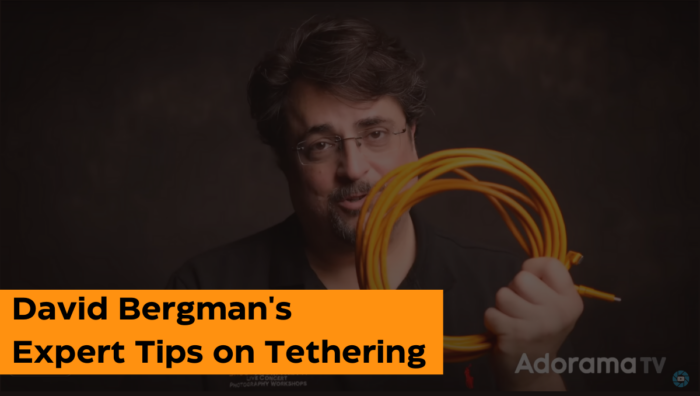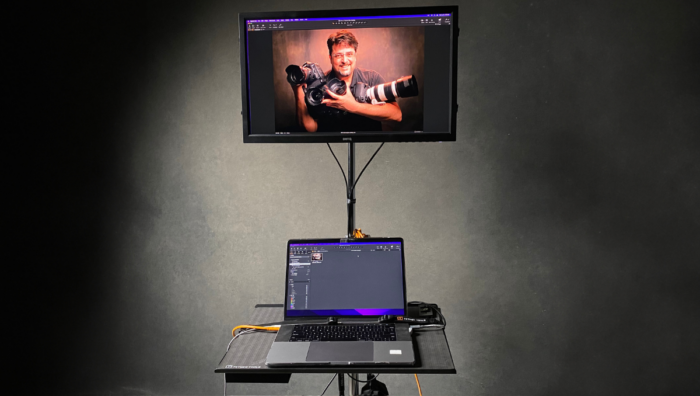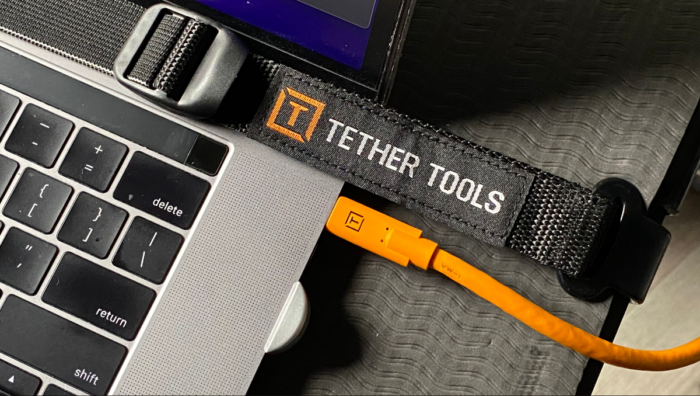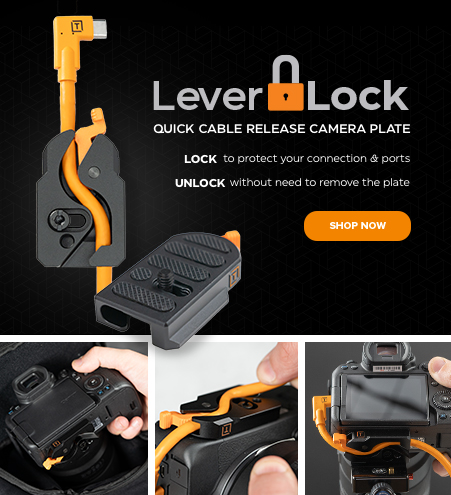
Want to learn how to incorporate tethering into your photography workflow? In the latest “Ask David Bergman” video on Adorama TV, the acclaimed concert photographer, David Bergman, discusses the key benefits of adding tethering to a photographer’s workflow.
Tethered photography has revolutionized the way photographers work, offering ultimate control and efficiency during shoots. Let’s dive into the main highlights and explore the essential tethering solutions David utilizes in his photography workflow.
What is Tethering?
David kicks off the video by emphasizing the significance of tethered photography in photoshoots.
“You can connect, or tether your camera to a computer while you are taking pictures, so when you shoot the pictures you take are immediately sent to your computer where you can view and edit them,” says Bergman.
With the ability to view your images on a larger screen, photographers can ensure critical details are perfect before wrapping up a session, such as focus, lighting, and framing.
Why Tethering Photography Matters
The real-time feedback you get from tethering enhances collaboration between photographers and their creative team, clients, and models, leading to exceptional results.
“By shooting directly into your computer you can see your images right away on a bigger screen and you can even set it up to automatically tone your photos so they look much closer to the final result as opposed to what you are seeing on the camera screen,” says Bergman.

Benefits of Tethered Photography
Many different types of photographers can benefit from adding tethering to their photography workflow. In a studio setting, it is great for still life photography, product photography, and food photography because it allows the photographer to make small adjustments and see the results on a larger screen.
For portrait photography, both in the studio and on location, tethering allows the photographer to check focus and collaborate with their subject to adjust posing and make sure the subject is comfortable with how the images are being captured.
“If you’ve got a client on set, they can sit away from the action and still see the photos as they are being captured, otherwise you will have to shoot then have everyone huddle around your small camera screen while you zoom in to try to check everything,” says Bergman.
Event and sports photographers, especially for large sports networks, typically shoot tethered as well so their editors can get images right away during a big game such as the Super Bowl to share.
What Do You Need to Start Tethering?
Setting up a smooth tethered workflow is crucial, and David demonstrates how easy it can be with the right tethering solutions. The first thing you need is a tethering cable. David’s go-to is the TetherPro 15′ USB-C to USB-C Right Angle Cable which offers fast data transfer rates, ensuring there’s no lag in image display. By reducing potential technical hiccups, you can focus entirely on your creative process. Not sure which cable you need? Tether Tools has a camera finder for those looking to find which cable is compatible with their camera.
Now that you have your cable, the next thing you’ll need is a reliable tethering software. Smart Shooter 5 is the ultimate tethering software for remote capture, advanced and multi-camera (up to 10) control for in-sync shooting, and QR/barcoding workflow. Now with personalized layouts with dockable windows, as well as the ability to save to multiple locations.
With your cable of choice and software selected, the next step is making sure that you have proper cable management to keep the port of your camera and computer safe and secure during a tethered shoot. Tether Tools offers a wide selection of cable management solutions such as the TetherBlock which locks your tethered cable into place, keeping your cable plugged in and your camera’s sensitive data port protected from damage. You can check out Tether Tools other cable management options here.
David Bergman’s Tethering Setup:
- Tethering Cable: David swears by the TetherPro 15′ USB-C to USB-C Right Angle Cable for its reliability and durability. This high-quality cable ensures secure and fast data transfer, preventing any interruption during shoots. When wanting to tether longer distances the TetherBoost Pro USB-C Core Controller Extension Cable extends and enhances the Type-C signal an additional 16 feet (5m) to help move your images up to 10Gbits for the fastest and most secure way to transfer your files from your camera to your computer.
- Tethering Software: Tethering software is the heart of the tethered photography workflow. David advocates for the Smart Shooter software, which boasts an intuitive interface, robust features, and compatibility with a wide range of camera models.
- Tether Table Aero: A stable and portable workstation is essential for tethered photography on-location. David’s preferred choice is the Tether Table Aero, offering a secure platform for his laptop or tablet, allowing easy access to his images.
- Cable Management: Avoid cable chaos with Tether Tools’ line of cable management solutions. These nifty gadgets, like the TetherBlock Arca and the TetherGuard keep cables securely connected, preventing accidental disconnection during a photoshoot.
- Rock Solid Low Boy Roller: The Low Boy Roller Stand meets the height requirements of today’s hard working photographers, whether that’s a sitting workstation or a high overhead studio strobe setup.

David’s Pro Tips for Success:
Throughout the video, David shares invaluable pro tips for mastering tethered photography:
- Backup Your Files: Always create redundant backups of your images to prevent data loss. With the Smart Shooter 5 tethering software’s SmartSave feature, photographers can save images to multiple locations simultaneously (card, computer, cloud and more) for complete control of file backup.
- Secure Your Gear: Use Tether Tools’ secure straps, mounts, and cable management solutions to protect your equipment during shoots.
- Collaborate and Communicate: Tethering fosters collaboration to communicate effectively with your team and clients to achieve your vision.
Conclusion:
David Bergman’s latest “Ask David Bergman” video on Adorama TV is a goldmine of knowledge for photographers seeking to improve their photography skills through tethered photography. By investing in Tether Tools’ solutions, you can create a seamless and efficient workflow that unlocks your true creative potential. Don’t miss this opportunity to revolutionize your photography game and embark on the path to success with tethered photography! Watch the full video here.
About David Bergman
David Bergman is a photographer and photo educator who has been a Canon Explorer of Light since 2015 which is one of the highest honors achievable by a professional photographer. David is country singer, Luke Combs, tour photographer since 2019, and has been Bon Jovi’s tour photographer since 2010. David hosts regular workshops on the road called Shoot From The Pit, where he allows other photographers to spend the afternoon learning the “tricks of the trade” that he has picked up during his 30 years as a working professional photographer, then attendees use everything they learned to shoot the show that evening from unique locations including inside the photo pit. Davie also is the host of “Ask David Bergman”, a popular series on Adorama TV’s YouTube channel. You can learn more about David here.




